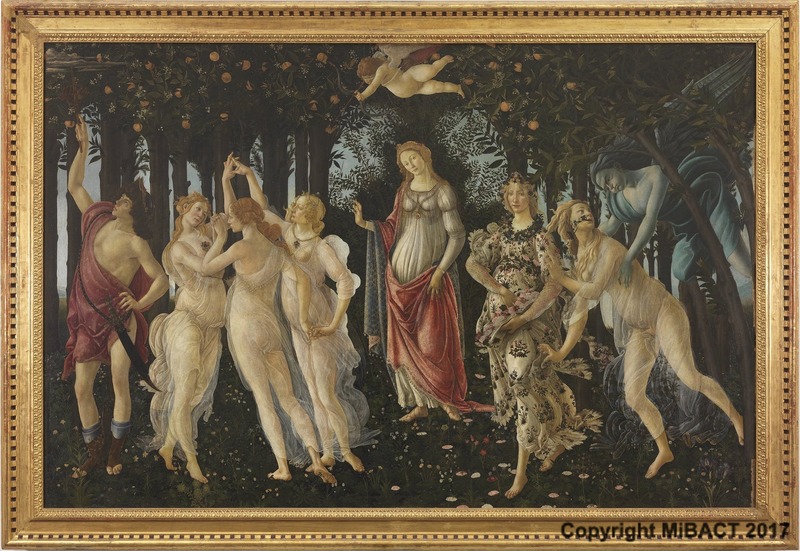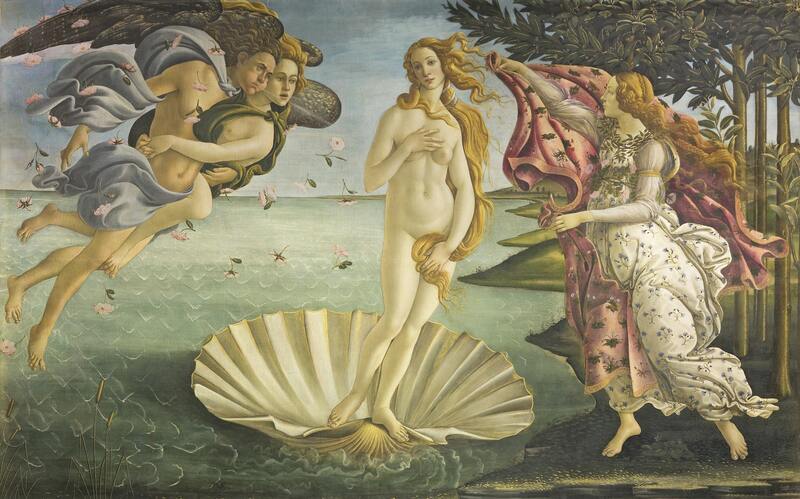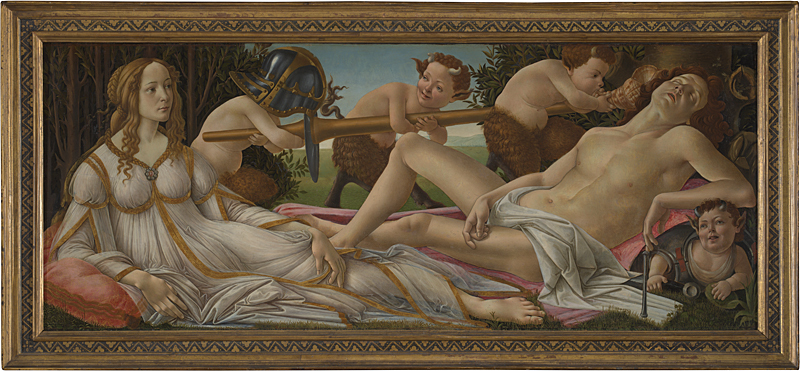Botticelli
Venus’ connection to both nature and high society made her a compelling figure for humanist artists. She is connected to nature by birth and by history with Greco Roman literature while she maintains a connection to high society, often depicted in elegant settings with lavish fabric and precious jewels. When she is set in nature, the narrative portrays her birth or myths. Sandro Botticelli (1445- 1510) demonstrates this duality of her figurative connections. He painted only three versions of the goddess including Primavera, and The Birth of Venus, and Mars and Venus, each depicting something unique compared to the others. Botticelli gained popularity quickly, working for the infamous Medici family. The family commissioned all three of the paintings, with Primavera and Birth of Venus thought to be a pair that hung side by side in their home. It is through his connection to the Medici's that he learned humanist philosophy and connected with the goddess of love and sexuality.
The Primavera is defined as a poeisa, a poem turned into a painting. The painting calls upon the mythical figures of the Greco-Roman pantheon and simultaneously gives life to the story about the Roman deities Venus, the Graces, Zephyr, and Flora, ushering in springtime. While telling a single narrative, the painting can be divided into sections with how the characters all portray different themes. Mars, furthest right, appears unaware of the actions of his companions; he is simply mesmerized by the ripe oranges hanging low on the trees lining the edges of the painting. Then, the Three Graces dance in a circle, their sheer gowns flowing in the wind. None notice the cherub, Cupid, flying high above with an arrow notched and ready to find home in their trio. Dead center, Venus stands back from the group, like a queen on a throne. Her expression is blank, head tilted to the side as if she is confused by the viewer. Notably, Venus is fully clothed in a medieval style gown. Finally, there is the most dynamic element of this painting. Zephyr chases after a nymph mid transformation. Frightened, the nymph appears to fall into her evolved form, the goddess Flora. Adorned in flowers, the goddess sprinkles flowers from her dress with a soft smile gracing her lips.
Five years later, Botticelli created the Birth of Venus. This painting stands out from the others for two reasons. First, where the other Venus renderings are fully clothed, in this painting she is nude except for her hands covering some of her exposed body. This is because of the second difference; Birth of Venus portrays the actual myth of her birth. Venus rides a shell from the sea, where another female figure, possibly the goddess Flora, awaits with a pink and floral print cloak. Flowers fly across the painting with the wind god Zephyr and the female companion he holds against his side. Lips pursed; Zephyr blows a gust of wind that billows Venus’s hair and cloak. The delicate wind, Venus’s open posture, and soft color pallet reflect the romantic style associated with the goddess. In addition, Botticelli’s attention to the form of the figures, especially Venus’s contrapposto pose, demonstrates the humanist ideal of imitating the technique of ancient artists.
Then there is Venus and Mars, painted around the same time as Birth of Venus, does not depict an actual myth, like the Primavera. Believed to be a wedding gift, the elongated painting shows a comical outing between Venus and her divine partner Mars. Venus reclines on the left while her partner Mars, sleeps awkwardly across from her. Venus’s expression, like the other paintings leaves the viewer wanting in understanding her feelings as she gazes at her lover. While Mars sleeps, head slumped back, a group of three satyrs attempt to wake the god of war with no luck. Two clumsily carry a trumpet, blasting the sound in Mars’ ear while the third crawls in the armor that holds the god up. Like the others, Botticelli’s attention to naturalism demonstrates his education in humanist artistic style.


